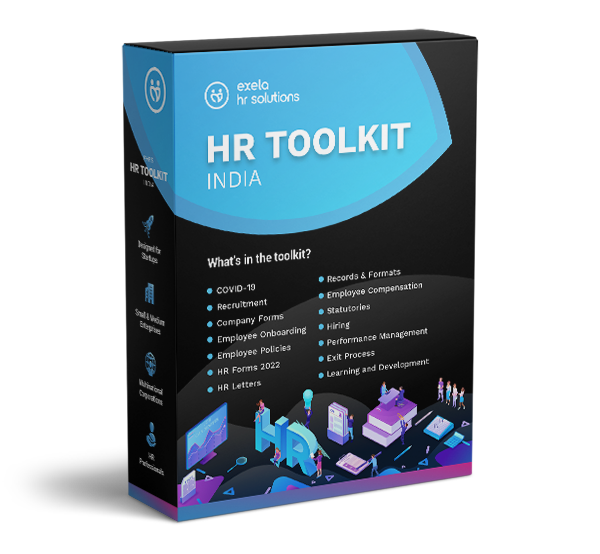
Starting from the origin - the story begins in the late 1800s when an esteemed economist first introduced the term 'Human Resources' in his influential book, 'Distribution of Wealth.' This fascinating concept quickly caught the attention of thinkers and leaders, spreading like wildfire across disciplines and attracting the curiosity of management gurus.
As the 1950s rolled in, a new label - the 'personnel department' - added a new layer of understanding to this evolving field. However, the term 'Human Resources' took root, firmly establishing itself within the business world, carrying with it a multitude of characteristics and nuances that would shape the course of this transformative domain.
Join us as we unravel the rich history and captivating journey of HR.
Stepping into the early 2000s, the business world experienced an exhilarating transformation, racing ahead at an unprecedented pace. In this dynamic era, the role of HR underwent a remarkable evolution, embracing agility and strategic prowess. As the spotlight firmly landed on talent as the key driver of success, HR emerged as the true powerhouse behind the business strategy.
While businesses today strive to stay ahead of the curve to keep up with the pace of the ever-changing market, HR practices also need to evolve. And doing so might land you in a pool of questions and doubts. So, here are 10 FAQs about reinventing HR in the 21st century.
Throughout this awe-inspiring journey spanning a century or so, the traditional term 'HR' faced numerous challenges in capturing the essence of this transformative function and its vital standing in today's corporate landscape.
10 FAQs for Reinventing HR in the 21st Century
The business landscape is rapidly evolving in the 21st century, and so does the field of Human Resources (HR).
Traditional HR practices are being challenged by new technologies, changing workforce demographics, and a greater emphasis on employee well-being and engagement.
To navigate these challenges successfully, HR professionals must be willing to reinvent their approach.
1 - How can HR leverage technology to streamline processes and enhance employee experience?
Technology has become an indispensable tool for HR professionals in the digital age. Automation, artificial intelligence, and data analytics can significantly improve HR processes like recruitment, onboarding, performance management, and learning and development.
By leveraging technology, HR can not only save time and resources but also enhance the employee experience, making HR more efficient, personalized, and user-friendly.
2 - How can HR adapt to the changing nature of work and the gig economy?
The rise of remote work and the gig economy has transformed the traditional employment landscape.
HR departments need to address the challenges posed by a more flexible and remote workforce. Questions around attracting, engaging, and retaining gig workers, ensuring their well-being and inclusion, and managing remote teams effectively become crucial.
HR must adapt its policies, practices, and culture to accommodate these new work arrangements and foster a sense of belonging for all employees, regardless of their employment status or location.
3 - How can HR promote diversity, equity, and inclusion (DEI) in the workplace?
Diversity, equity, and inclusion have rightfully gained significant attention in recent years.
HR plays a critical role in driving DEI initiatives within organizations. HR professionals must ask themselves how they can create diverse talent pipelines, mitigate bias in hiring and promotion processes, foster an inclusive work environment, and provide opportunities for underrepresented groups to thrive.
Reinventing HR requires a genuine commitment to DEI and the implementation of concrete strategies to ensure that all employees feel valued and included.
Also Read: The Future of HR: How Automation is Changing the Game
4 - Is your HR department keeping pace with the changing times?
The effectiveness of human resources (HR) departments can be hindered when they remain stagnant and fail to adapt and progress.
Business leaders must ensure that their HR teams are well-informed about the latest regulations and best practices. To achieve this, leaders can allocate a budget for HR professionals to attend conferences, webinars, seminars, workshops, and other relevant events.
Subscribing to industry-related magazines, newsletters, and podcasts can also help the HR department stay updated.
5 - How can HR prioritize employee well-being and mental health?
Employees' well-being and mental health have emerged as top priorities in the modern workplace.
HRs must go beyond traditional benefits and wellness programs and consider how to create a supportive culture that addresses the holistic well-being of employees. Questions around flexible work arrangements, work-life balance, stress management, and mental health support must be addressed.
HR professionals should explore innovative approaches, such as employee assistance programs, mental health resources, and promoting healthy work-life integration to ensure the well-being of their workforce.
6 - How can HR become a strategic partner in driving organizational success?
To reinvent itself, HR must transcend its administrative role and become a strategic partner in achieving organizational goals.
HR professionals need to develop a deep understanding of the business, align HR strategies with the overall business strategy, and demonstrate the value of HR initiatives in driving bottom-line results. By leveraging data and analytics, HRs can provide insights to inform decision-making, identify skill gaps, and develop talent strategies contributing to long-term organizational success.
7 - How can you ensure the facility staff members feel safe at work?
Ensuring the safety and well-being of facility staff members is paramount for any organization.
Several measures can be implemented to provide assurances that they are safe at work. Firstly, clear communication is essential. Regularly sharing information about safety protocols, procedures, and any updates or changes helps create a sense of transparency and trust.
Providing training sessions on safety measures, emergency protocols, and proper use of personal protective equipment (PPE) is crucial. Regular safety audits and inspections to identify and address potential hazards or risks also instills confidence.
Additionally, establishing channels for staff members to report safety concerns or incidents without fear of reprisal and promptly addressing those concerns further reinforces their safety and well-being.
Ultimately, by prioritizing and actively managing the safety needs of facility staff members, organizations can create an environment where employees feel secure, valued, and motivated to perform their best.
8 - What infrastructure support is needed to support a shift to an at-home workforce?
Facilitating a successful transition to an at-home workforce is necessary for today's work environment, which requires several infrastructure support measures for effective application.
First and foremost, reliable and secure internet connectivity is vital to ensure uninterrupted communication and access to online resources. Employers may consider providing or subsidizing high-speed internet connections for employees without adequate connectivity.
Additionally, offering company-issued laptops, computers, or mobile devices enables employees to perform their tasks efficiently from home. Virtual private networks (VPNs) should be implemented to ensure secure remote access to internal systems and data.
Collaboration tools, such as video conferencing software and project management platforms, promote effective communication and coordination among remote teams.
Data backup and cloud storage solutions help safeguard valuable information and allow easy access and collaboration on shared files. Furthermore, ongoing technical support and IT assistance are crucial to address any technical issues or challenges remote employees may encounter.
By investing in the necessary infrastructure support, organizations can empower their at-home workforce to remain productive, connected, and successful.
9 - How can your HR team stay attuned to evolving employee expectations and respond effectively?
Organizations that prioritize employee voices and foster a culture of continuous feedback will gain a competitive edge in the future.
Implementing regular surveys and focus groups allows companies to gather valuable insights into specific HR concerns and find practical solutions. Combining these inputs with human capital analytics and intuition makes employee feedback a powerful strategic tool.
Leaders must also demonstrate trustworthiness by responding to feedback transparently and promptly.
Consider asking yourself these questions to ensure employee satisfaction and retention at your organization:
How can we enhance and expand our current employee survey initiatives? What strategic objectives can we advance by leveraging employee feedback?
How can we ensure our employees recognize and appreciate their valued contribution to shaping our organization?
Organizations can build a responsive and engaged workforce by continuously improving survey methodologies, utilizing employee feedback to drive strategic decision-making, and consistently communicating the value placed on employee thoughts and expectations.
10 - Is your HR department capable of shaping the company culture in the future?
As the workplace landscape evolves, the development of organizational culture remains crucial, even if traditional methods of modeling values may be limited.
It is essential for HR teams to proactively explore new approaches to shape the company culture in this changing environment.
Ask yourself these questions to understand where you are with your cultural initiatives and how you want to drive your efforts:
How can we effectively communicate the core values and priorities of our company? What strategies can we employ to encourage employees to embody these values in their interactions with both customers and colleagues? Specifically, how can we update our plans for incorporating culture and values into recruitment, hiring, onboarding, and training practices? How can we ensure that employee perks, rewards, events, and rituals are meaningfully translated into virtual contexts?
By addressing these questions, organizations can adapt their strategies to foster a vibrant and purpose-driven company culture, even in the face of changing circumstances.
Conclusion
Reinventing HR in the 21st century requires HR professionals to embrace change and explore new ways of thinking.
By asking the above-mentioned key questions and addressing the challenges presented, HRs can transform their department into a proactive, strategic function that drives organizational success.
Leveraging technology, adapting to the changing nature of work, promoting DEI, prioritizing employee well-being, and becoming a strategic partner are essential steps for HR to stay relevant and make a meaningful impact in the modern workplace.
In the modern era, while most businesses are expanding their foothold worldwide, it might become challenging to keep up with the pace of changing business environment. However, businesses of any size can always opt for outsourcing options.
Outsourcing HR services from a leading company is always a wise decision; it brings expertise, cost savings, scalability, and improved compliance, allowing businesses to focus on core operations and growth.
Exela HR Solutions is a market-leading organization specializing in HR outsourcing services with a team of experts to guide you through your HR journey. We at Exela HR Solutions help streamline your HR processes while staying compliant with all the necessary employment laws and security standards.
Talk to our experts to know more about our services. Try Exela HR Solutions today https://ehrs.exelatech.in/solutions/by-offerings
DISCLAIMER: The information on this site is for general information purposes only and is not intended to serve as legal advice. Laws governing the subject matter may change quickly, and Exela cannot guarantee that all the information on this site is current or correct. Should you have specific legal questions about any of the information on this site, you should consult with a licensed attorney in your area.





